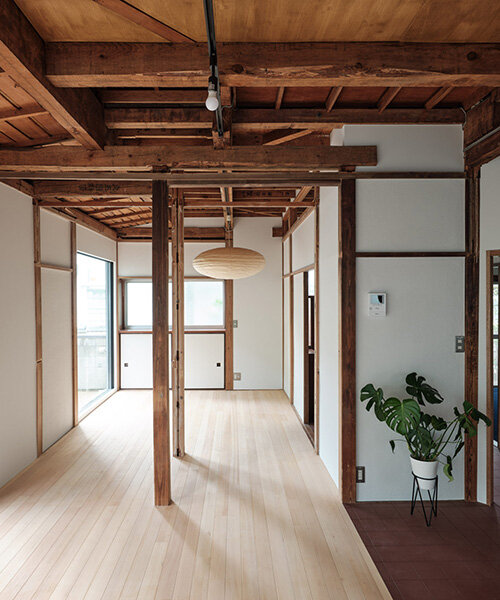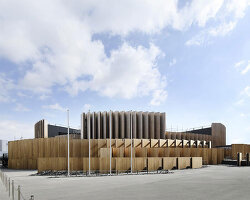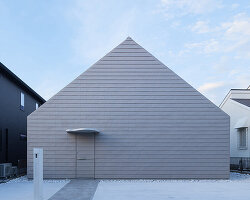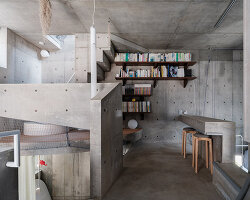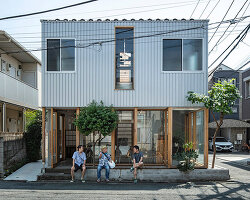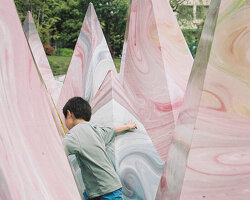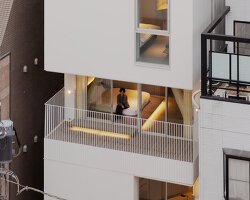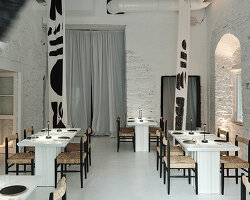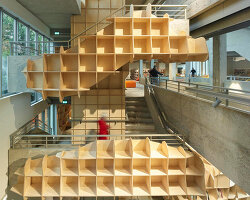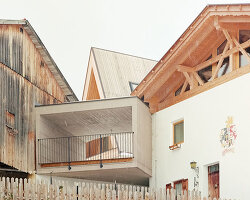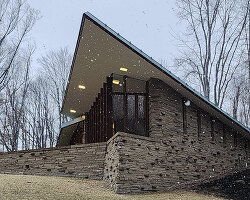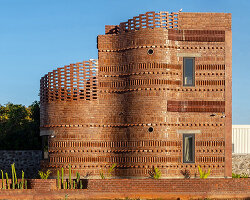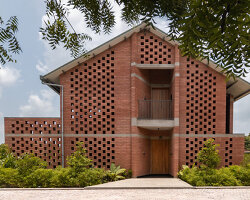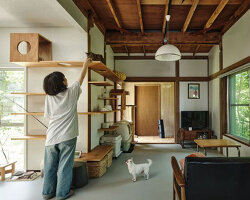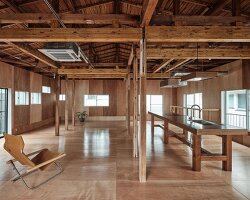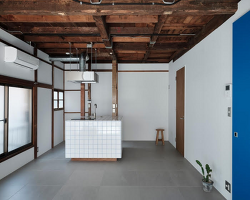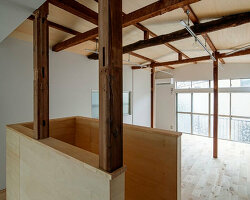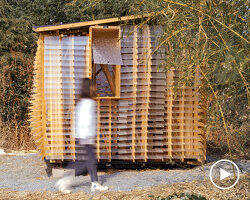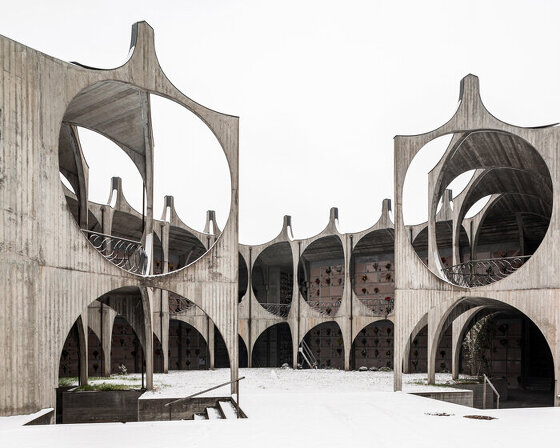ROOVICE renovates 70s wooden residence in Tokyo
The Shirokanedai House project by ROOVICE is a renovation of a 50-year-old wooden residence in Tokyo‘s Minato ward, Japan, transforming it for continued rental use. The primary focus was enhancing the 70s two-story house for earthquake resistance, with safety forming the basis for aesthetic and functional upgrades. Japanese tradition and contemporary design, enhance the property’s functionality, safety, and aesthetic appeal. The first floor is opened up by removing dividing walls, repainting grayish walls white, and replacing tatami floors with hemlock wood. The kitchen and corridor are updated with clinker tiles and a custom-made counter. The bathroom is reconfigured for more space, with updated Tamaishi tiles flooring. Upstairs, a kitchenette is removed, and new tatami mats and shoji doors are installed, maintaining traditional elements.
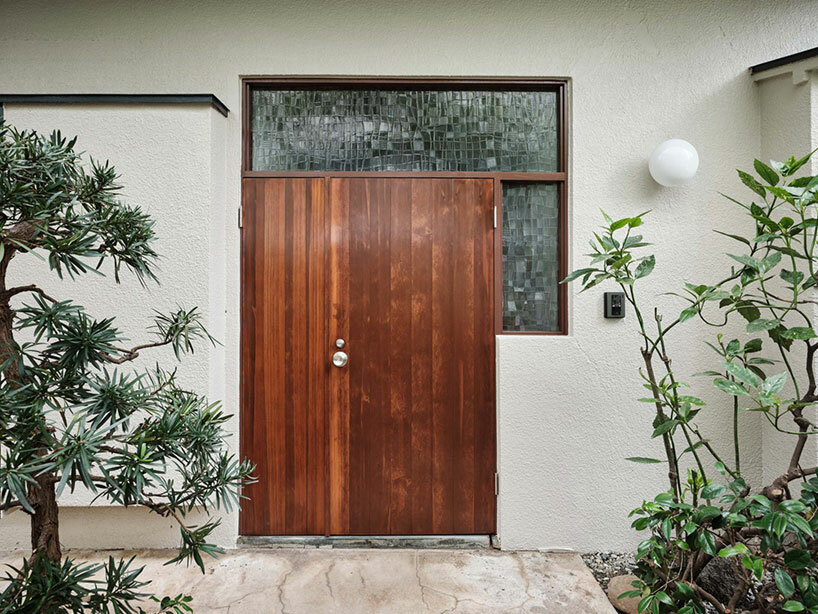
all images by Akira Nakamura
renewed interior adopts crisp white walls and wood flooring
Given the prohibitive costs of demolition in Japan and the property’s good condition, the owner, an experienced real estate professional, opted for renovation. The original first-floor layout featured dark, segmented spaces. To create a more open and inviting environment, ROOVICE removes dividing walls and ceiling boards, merging the former kitchen with two tatami rooms into a single, expansive area. The previously grayish walls are repainted in crisp white, and new windows are installed, allowing natural light to flood the space. The Japanese studio replaces Tatami floors with hemlock wood flooring, covering the traditional kotatsu stove pit. Clinker tiles now adorn the kitchen and corridor floors, and a custom-made kitchen counter adds a contemporary touch. A distinctive triangle-shaped built-in cupboard in the corridor wall is accentuated by a diagonal wall connecting it to the kitchen wall, and a new glass door, mirroring the cupboard’s style, enhances functionality, and aesthetic coherance.
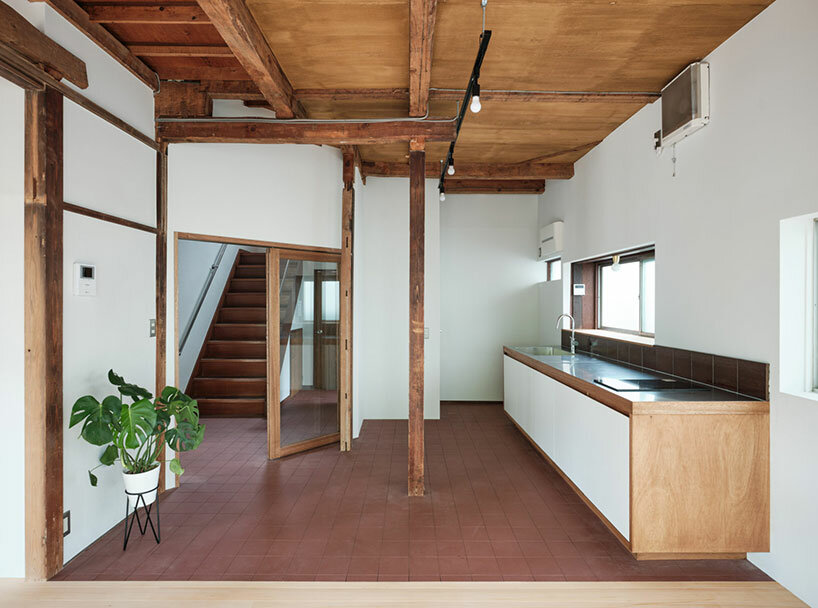
ROOVICE renovates a 50-year-old wooden residence in Tokyo
renovation features details reflecting Japanese tradition
In the bathroom, the space is reconfigured to accommodate a washing machine. The front room’s flooring is updated with practical PVC sheeting, while a new bathtub and white tiles are installed on the walls. Traditional Tamaishi tiles, reminiscent of the Shōwa era, are chosen for the bathroom and toilet floors. The wooden steps leading from the living room to the garden are replaced with stone steps, enhancing the connection between indoor and outdoor spaces. Upstairs, the kitchenette in the corridor is removed, and the wall is tiled with the same clinker tiles used on the ground floor. New tatami mats and refurbished shoji doors in the tatami rooms maintain a link to the home’s roots. The outer corridor’s flooring and windows are updated to match the ground floor, and all walls are painted white to create a cohesive and bright atmosphere. The third room on the second floor saw its old wood boards replaced with new lauan wood ones, and a beige carpet laid, providing a soft contrast to the wooden elements. The balcony undergoes waterproofing, and the fencing is repainted black, completing the home’s refreshed look.
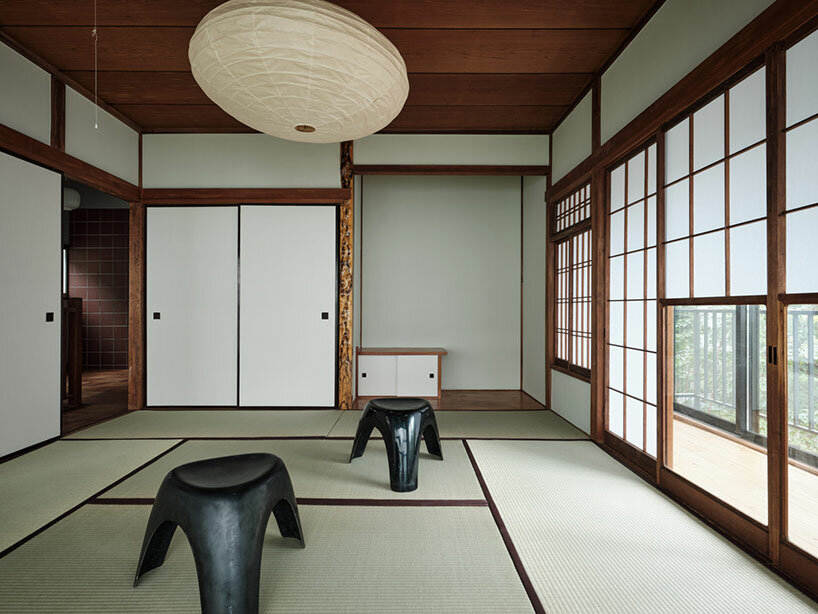
new tatami mats and shoji doors are installed to maintain traditional elements
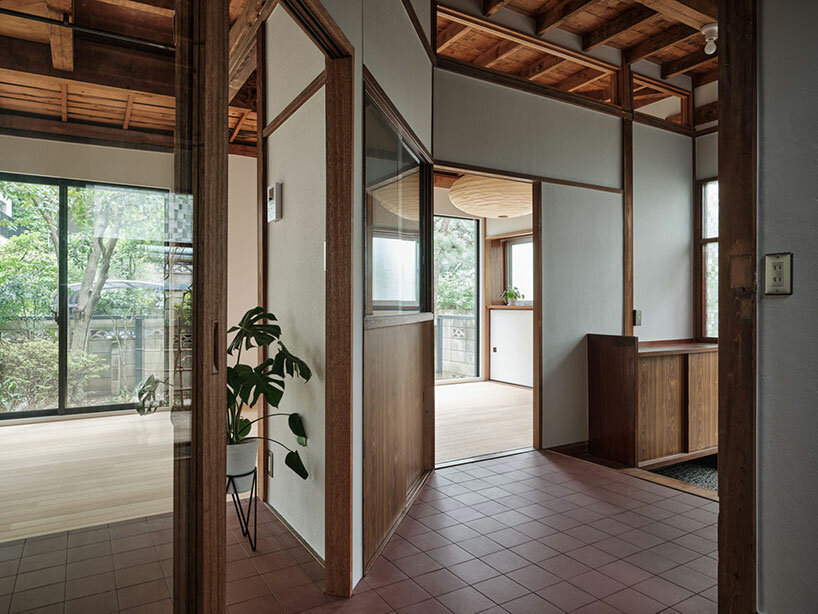
a diagonal wall accentuates the triangle-shaped built-in cupboard in the corridor
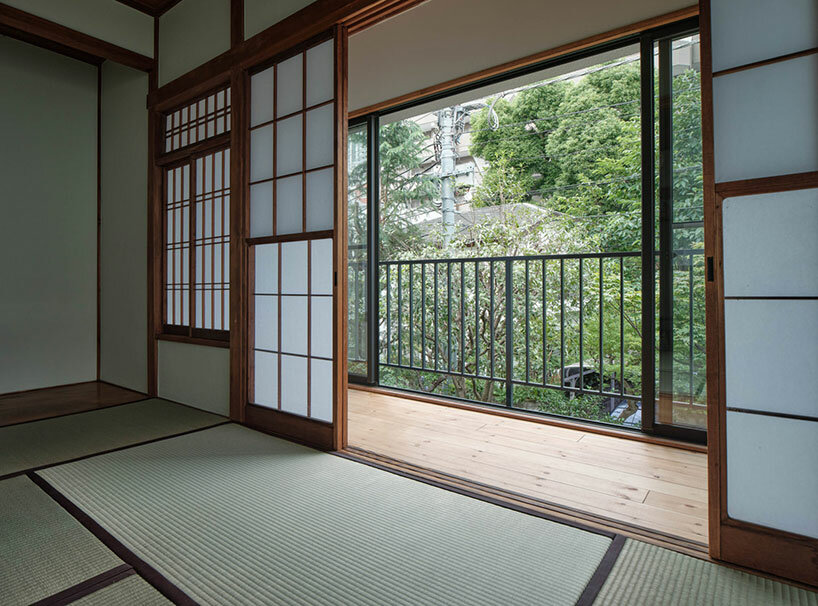
tatami rooms maintain a link to the home’s traditional roots
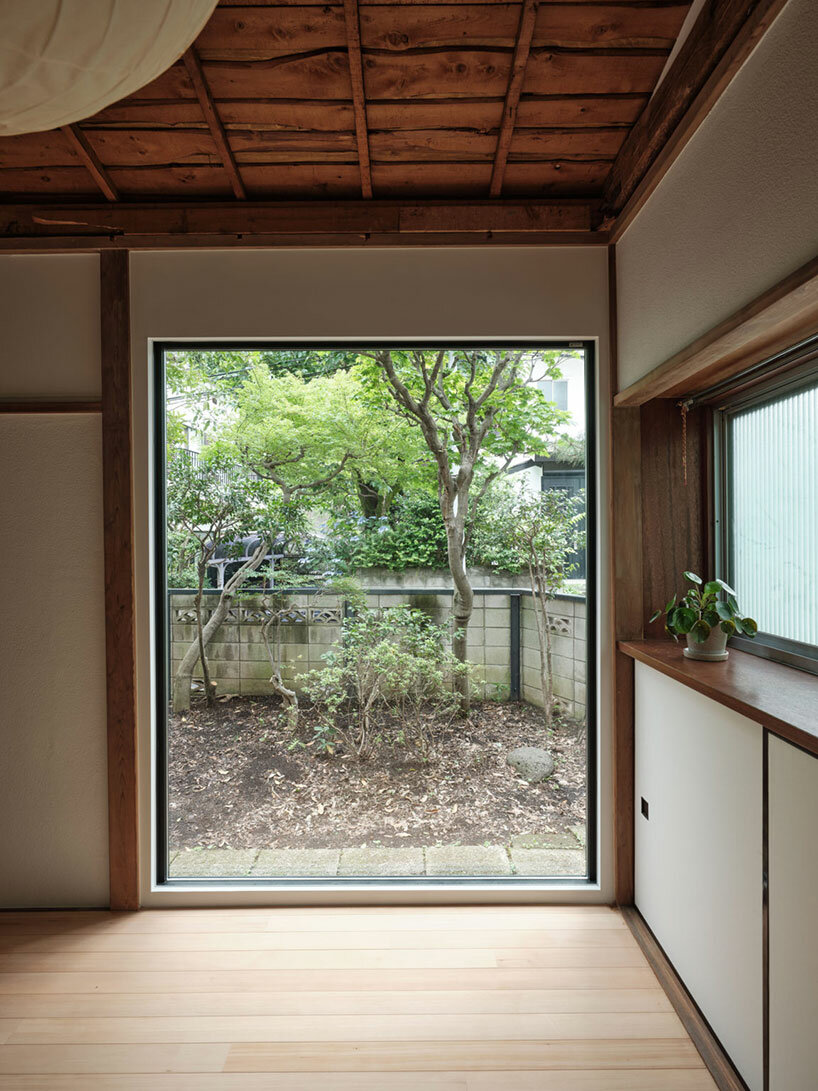
new windows are installed, allowing natural light to flood the space
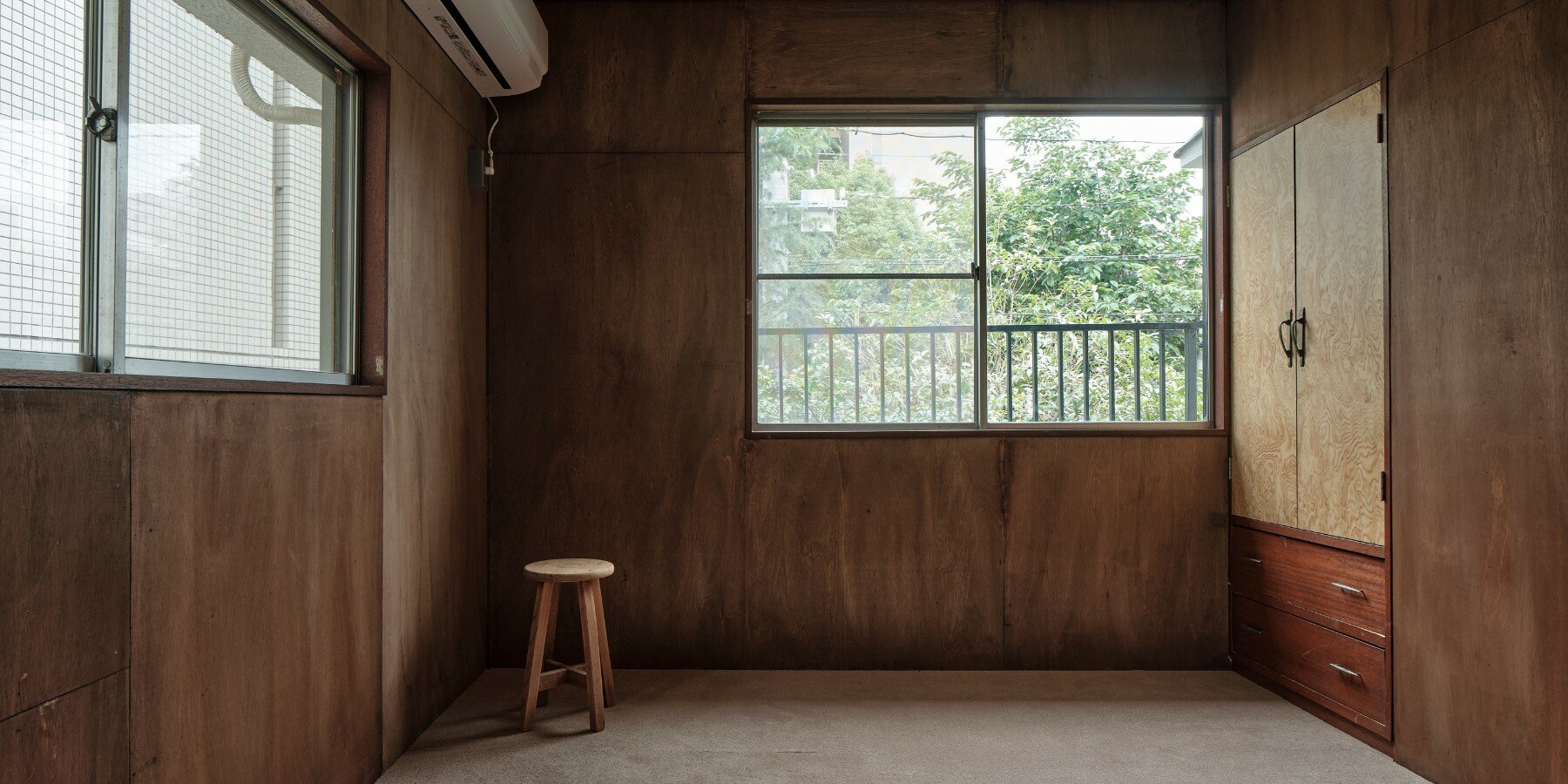
old wood boards replaced with new lauan wood ones
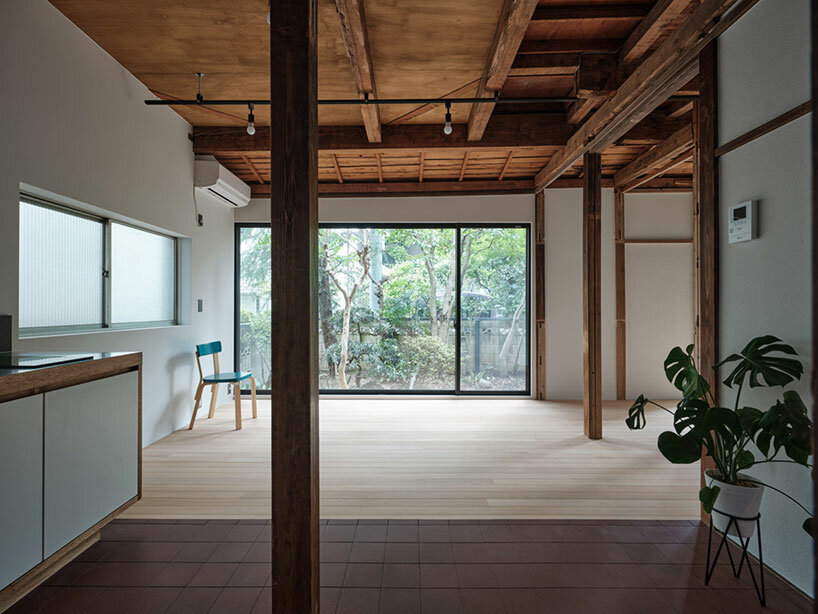
the first floor is opened up by removing dividing walls
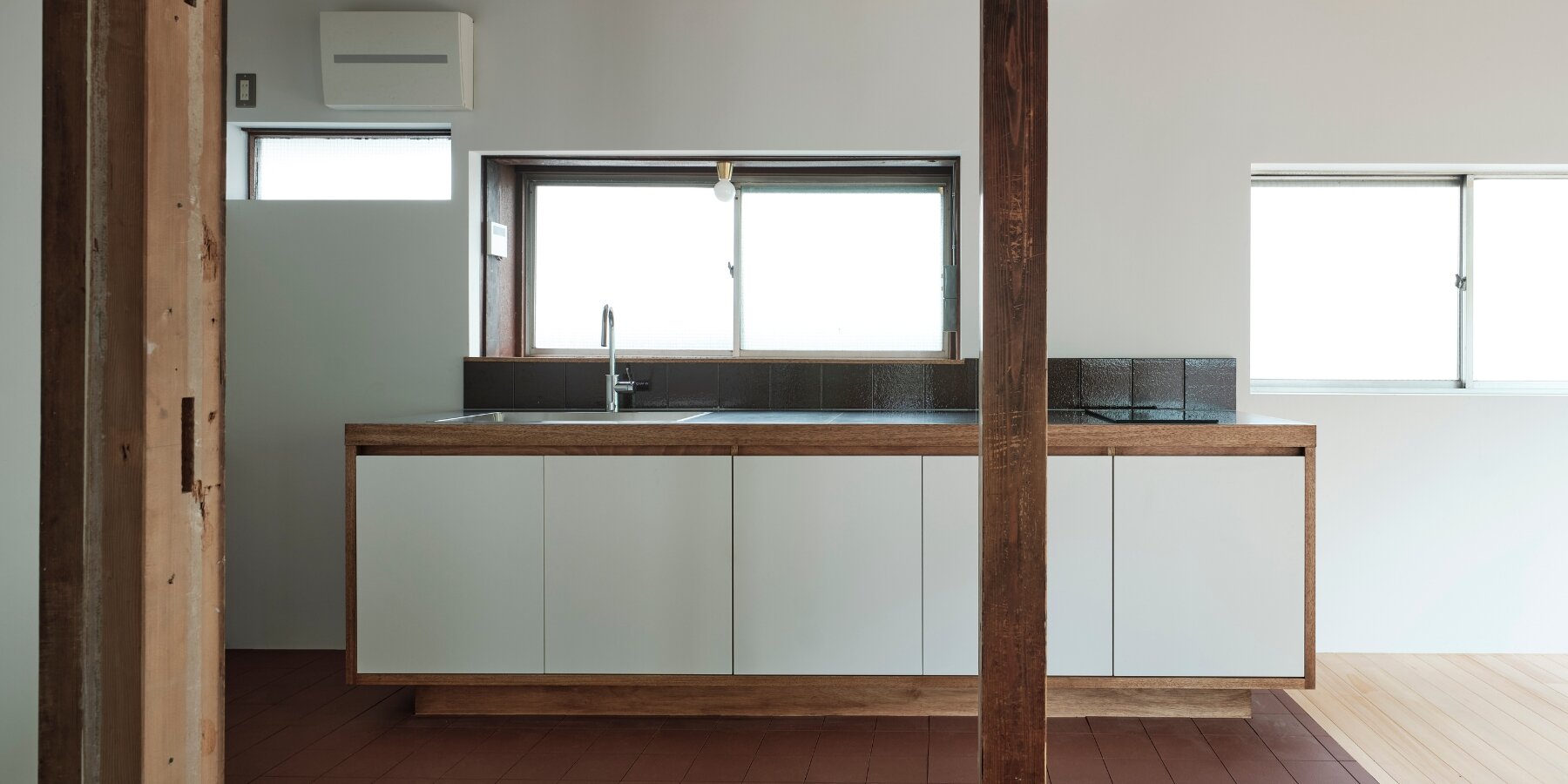
clinker tiles adorn the kitchen floor
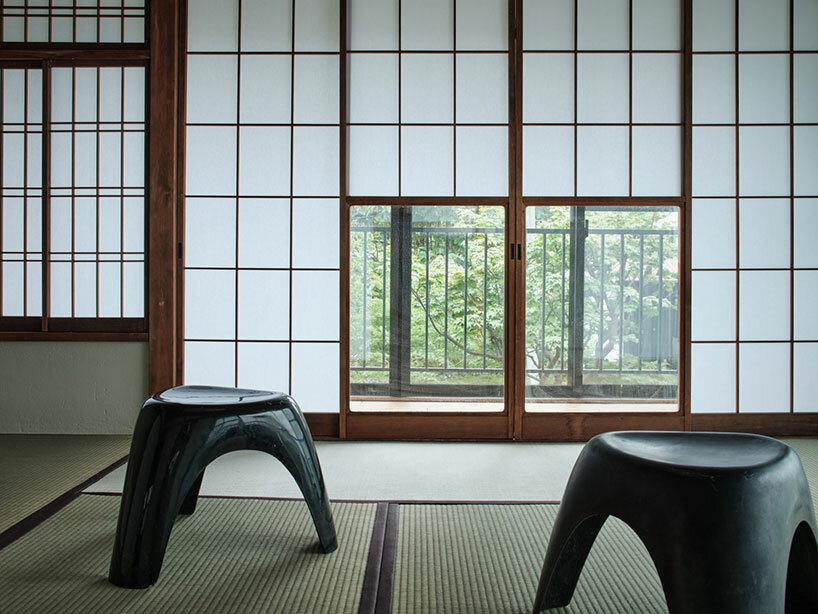
Japanese architecture and contemporary design enhance the property’s functionality, safety, and aesthetic appeal
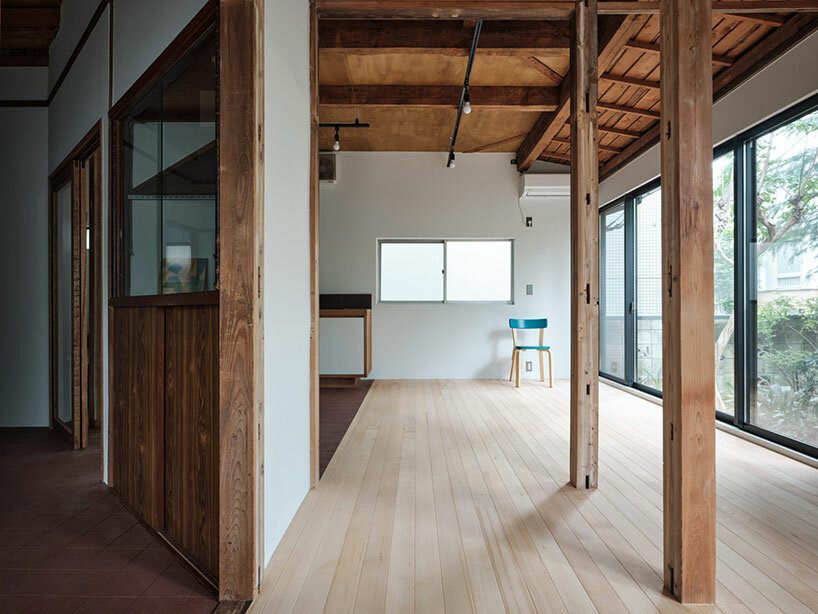
the former kitchen and two tatami rooms are merged into a single, expansive area
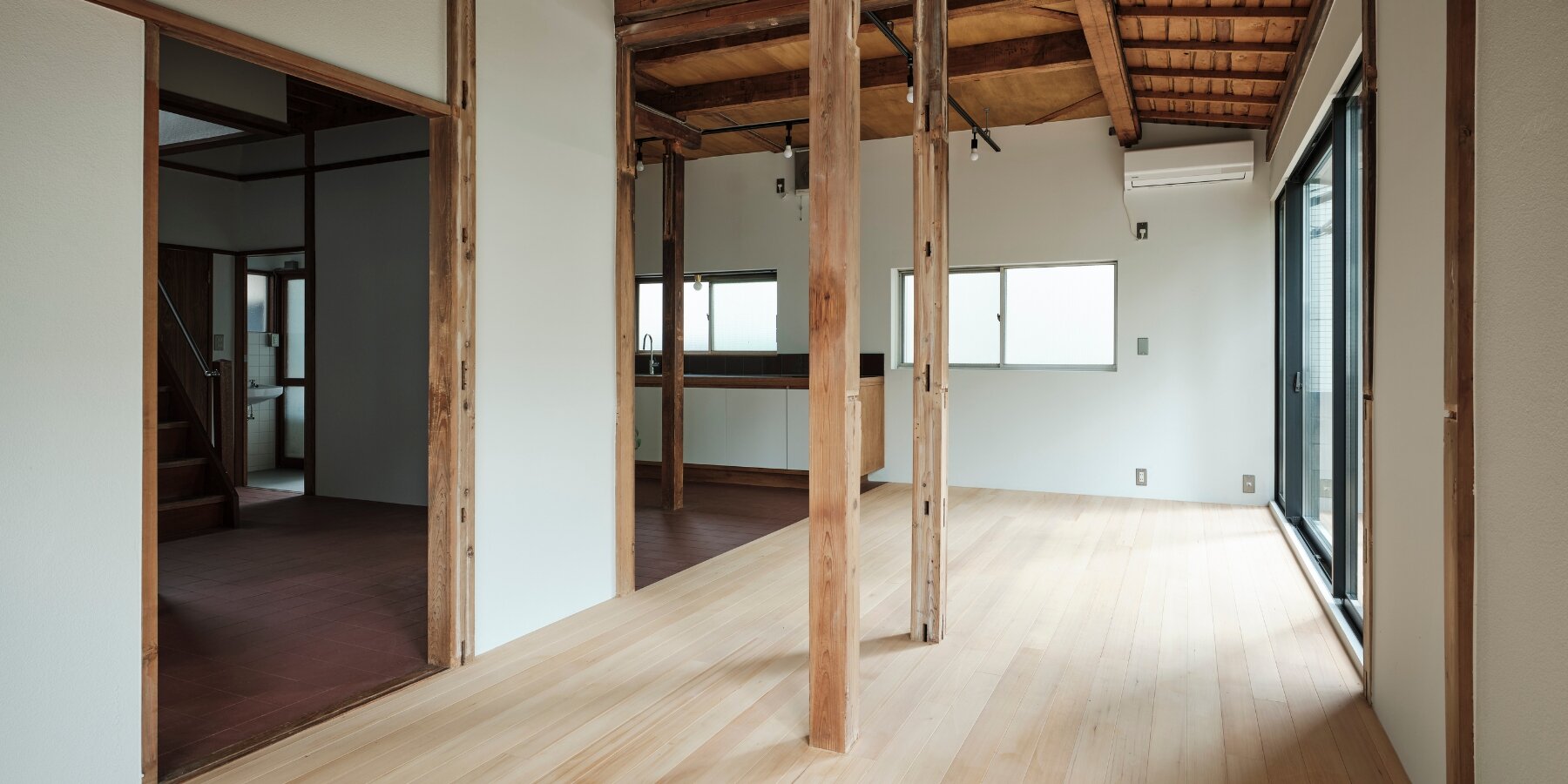
previously grayish walls are repainted in crisp white
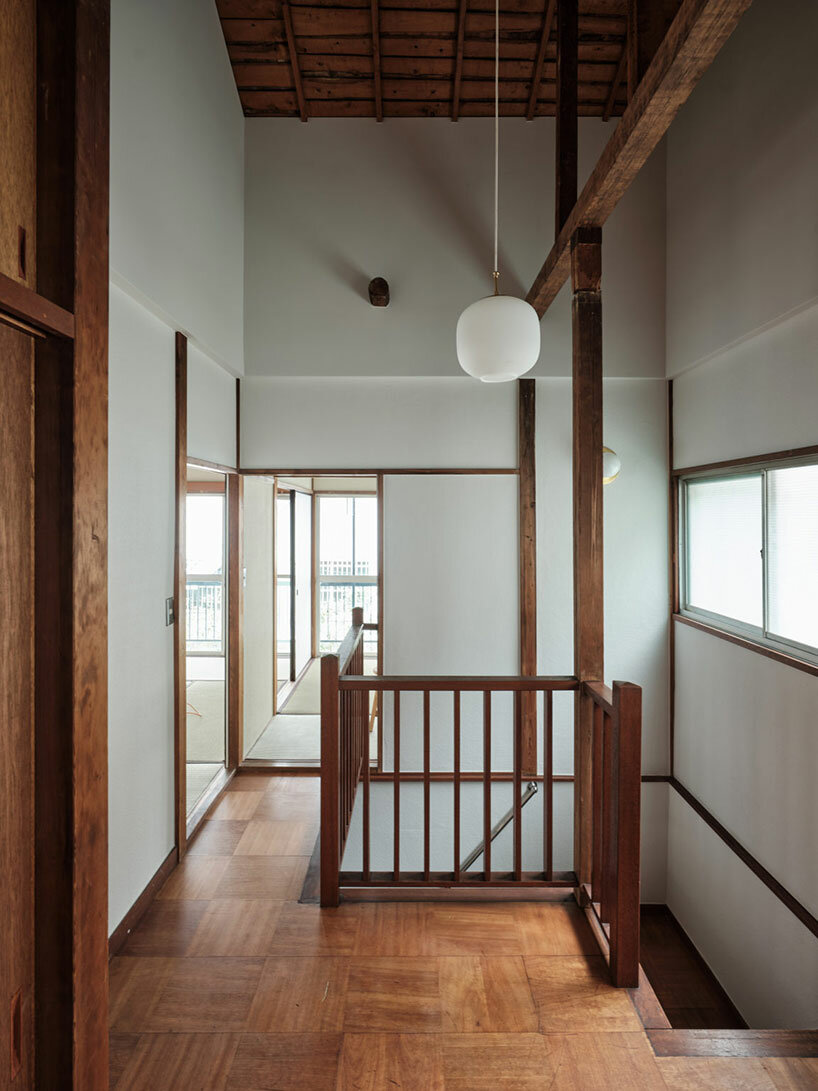
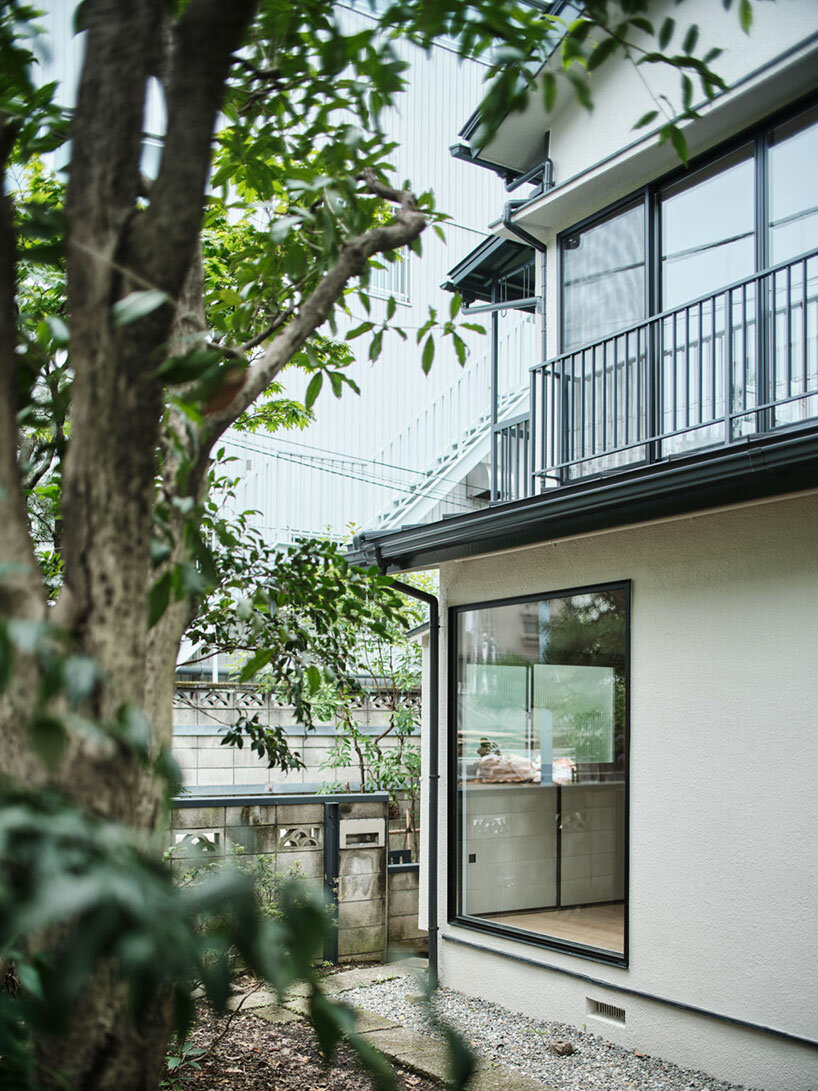
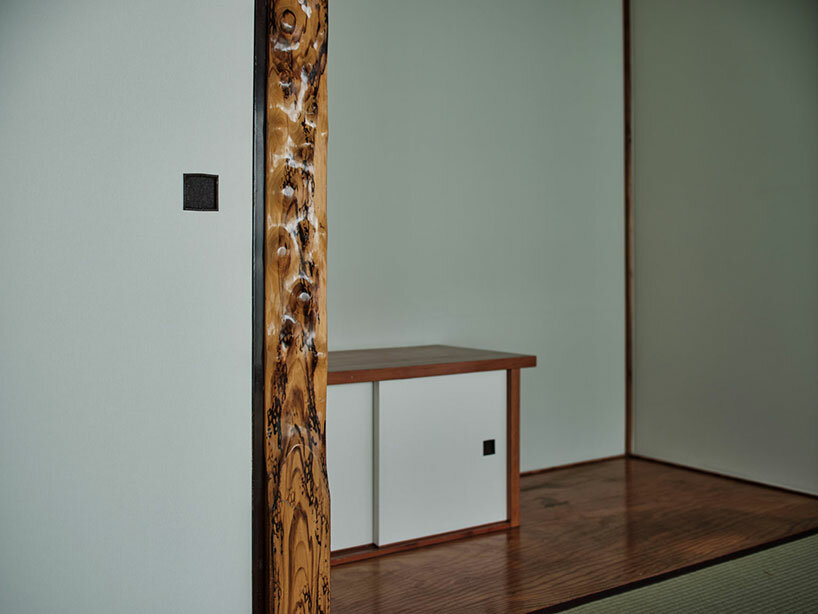
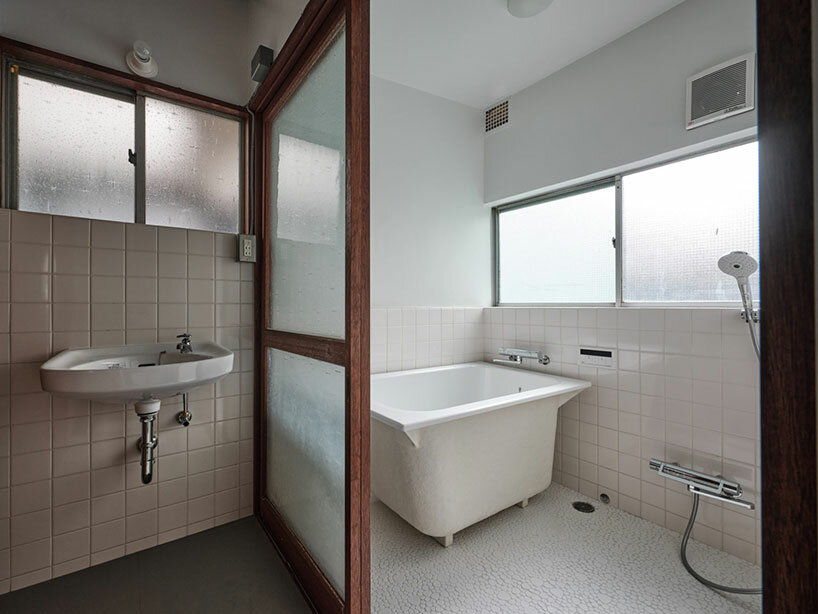
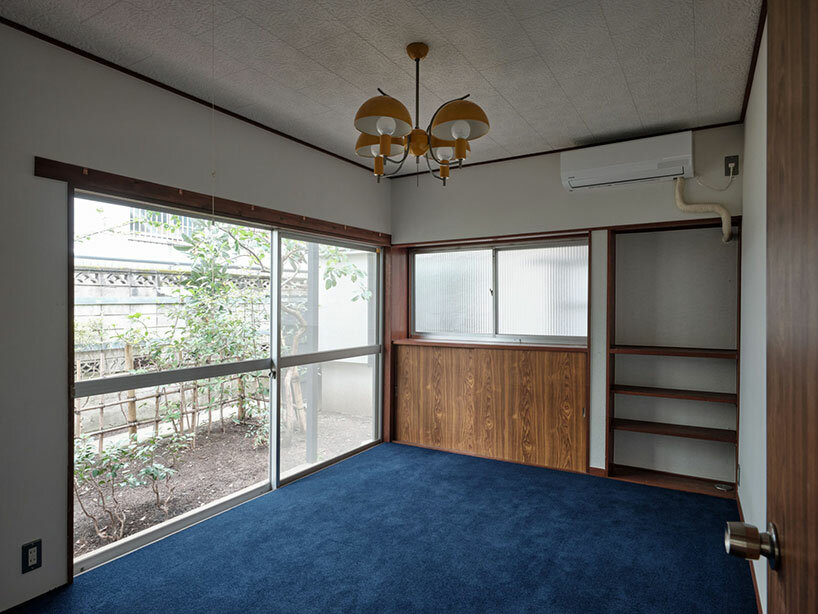
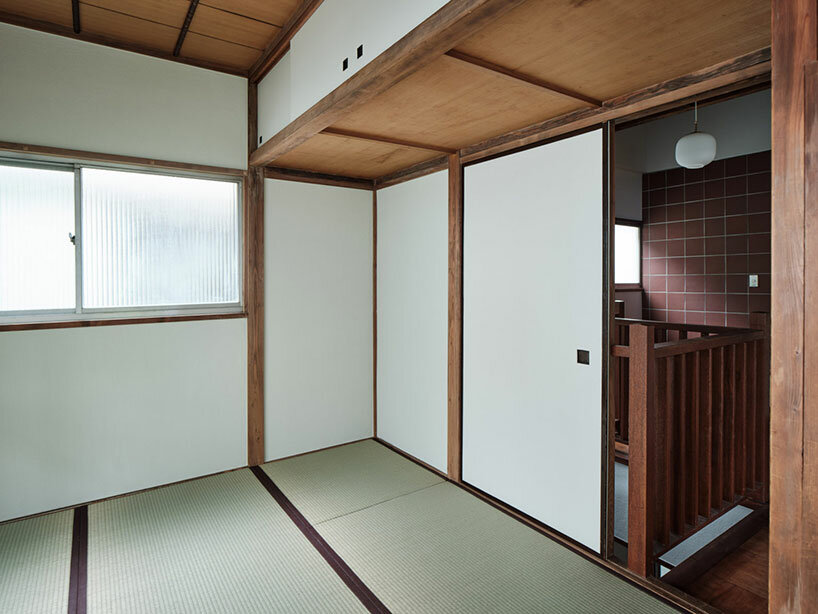

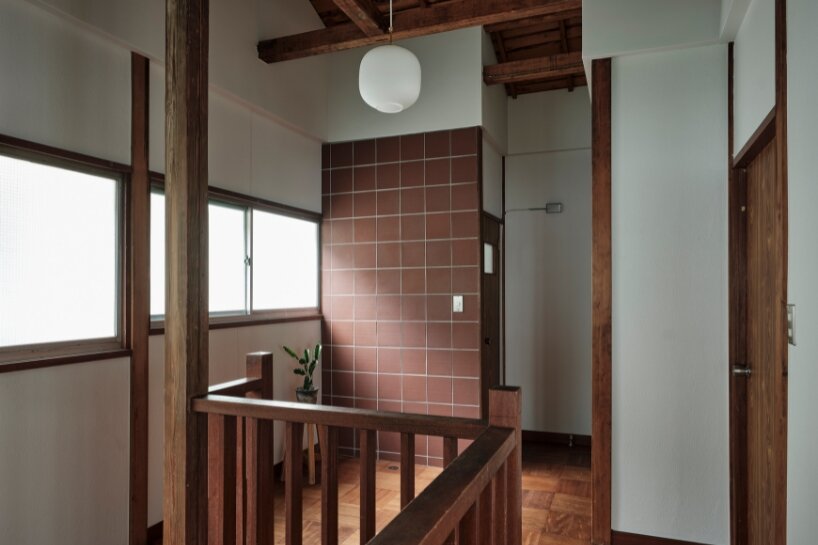
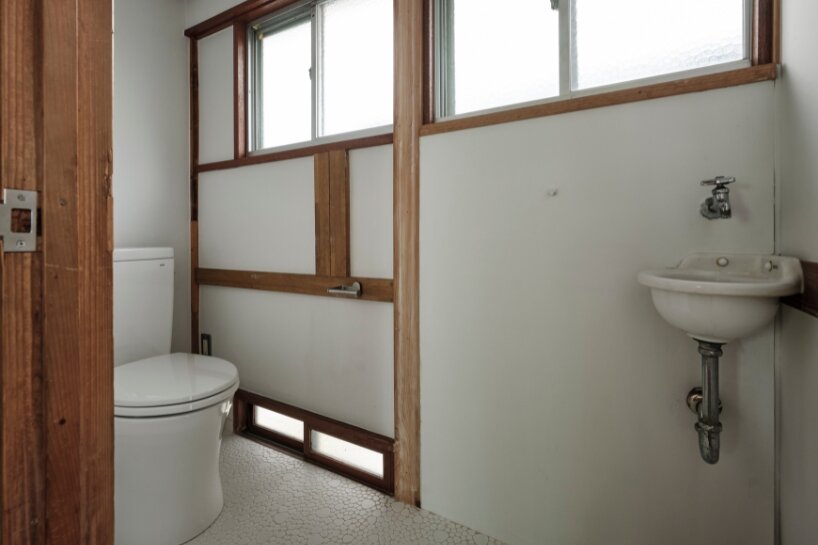
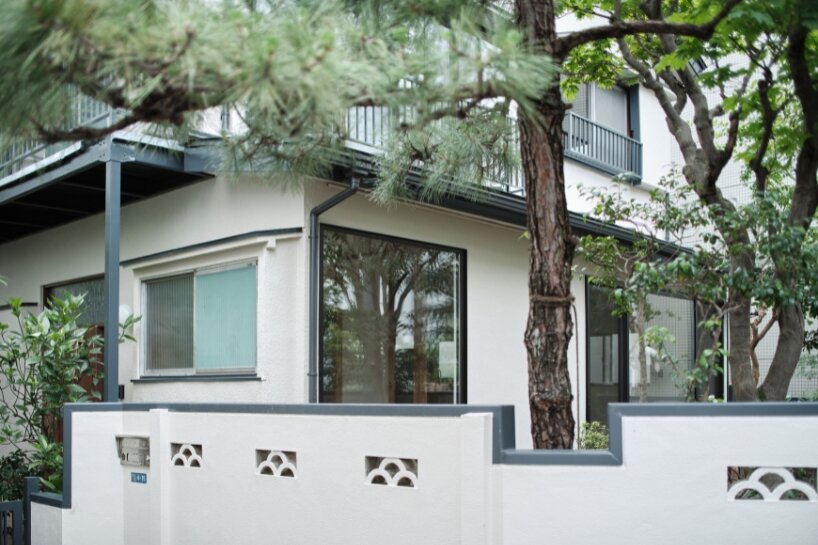
project info:
name: Shirokanedai House
designer: ROOVICE | @roovice
lead architect: Maoko Sato
construction: ROOVICE, Koji Kato
location: Shirokanedai, Tokyo, Japan
photographer: Akira Nakamura | @nakamamej
designboom has received this project from our DIY submissions feature, where we welcome our readers to submit their own work for publication. see more project submissions from our readers here.
edited by: thomai tsimpou | designboom
